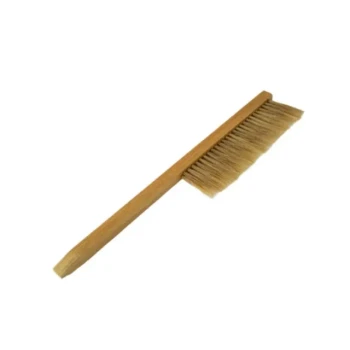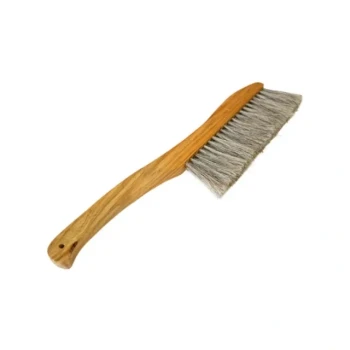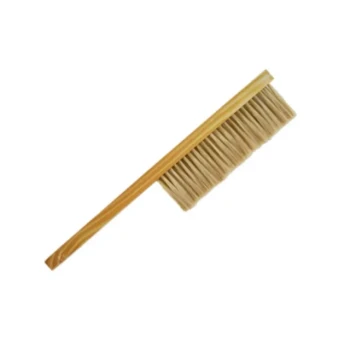Polystyrene beehives directly reduce the risk of winter starvation by providing superior thermal insulation compared to traditional wooden hives. This high level of insulation drastically lowers the amount of energy bees must expend to keep their central cluster warm. Because honey is the fuel for this energy, less heat loss translates directly to less honey consumption, ensuring the colony's food stores last longer through the cold months.
The core issue in winter survival is the colony's energy budget. Polystyrene hives shift this budget in the bees' favor by minimizing energy loss to the environment, allowing them to conserve critical honey reserves for survival and early spring growth.
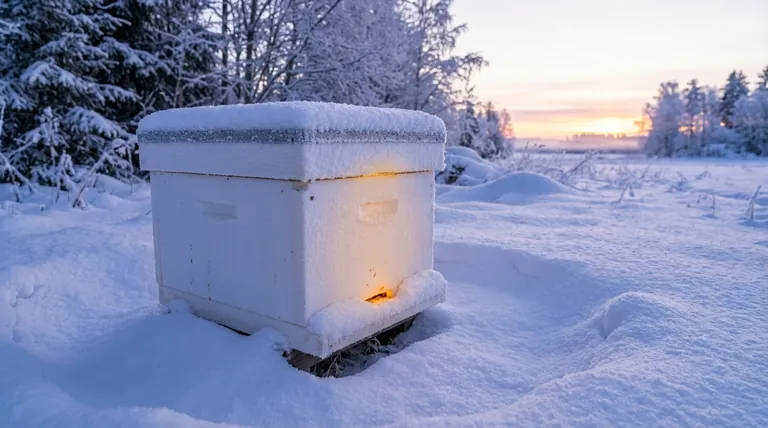
The Physics of Winter Survival: Energy vs. Insulation
A honeybee colony's ability to survive winter is a battle against heat loss. The material of the hive is a critical factor in determining the outcome of that battle.
The Winter Cluster's Energy Budget
Honeybees do not hibernate. Instead, they form a tight cluster and generate heat by flexing their flight muscles, effectively shivering.
This heat generation is fueled by one thing: honey. Every degree of warmth produced by the cluster comes at the cost of their stored food supply.
The Impact of Insulation
A hive wall's resistance to heat transfer is its primary job in winter. In a poorly insulated hive, the heat generated by the bees rapidly escapes into the cold air.
This forces the bees into a high-burn cycle, consuming honey at an accelerated rate simply to maintain a survivable temperature.
How Polystyrene Breaks the Cycle
High-density polystyrene has significantly better insulation properties (a higher R-value) than wood of the same thickness.
This superior insulation means far less heat escapes from the hive. The bees' "furnace" can run at a much lower level, dramatically reducing the rate of honey consumption and conserving their winter stores.
Beyond Warmth: The Critical Role of Moisture Control
Starvation is not the only winter threat. Cold, damp conditions are just as deadly, and hive material plays a crucial role in managing moisture.
Condensation: The Silent Killer
As bees metabolize honey, they release warm, moist air through respiration. When this air hits a cold inner surface of the hive, it condenses into water droplets.
This cold condensation can drip down onto the winter cluster, chilling the bees, increasing their stress, and forcing them to consume even more honey to stay warm and dry.
Why Polystyrene Hives Stay Drier
Because polystyrene is such an effective insulator, the interior walls of the hive stay warmer. They are less likely to fall below the dew point of the air inside.
This prevents condensation from forming on the walls and ceiling in the first place. The moisture is more effectively managed through the hive's ventilation system, keeping the bees warm and dry, not just warm and damp.
Understanding the Trade-offs
While highly effective for wintering, polystyrene hives are not without their considerations. Objectivity requires acknowledging their limitations.
Durability and Handling
Polystyrene is less durable than wood. It can be damaged by hive tools, and some pests, like wax moths or rodents, may attempt to chew through it if the hive is not managed properly.
Ventilation Strategy is Key
The excellent insulation of a polystyrene hive means that ventilation is critical. Without a proper ventilation strategy (e.g., an upper entrance or vented quilt box), moisture can become trapped, negating the material's benefits.
Initial Cost and Environmental Impact
Polystyrene hives can have a different cost profile than traditional wood. Furthermore, beekeepers must weigh the longevity and performance benefits against the environmental considerations of using a plastic-based product versus a natural, renewable material like wood.
The Spring Advantage: From Survival to Growth
Successfully overwintering is only half the battle. The ultimate goal is a strong, productive colony in the spring, and this is where polystyrene's benefits are compounded.
Conserving Energy for Brood Rearing
Because the colony exits winter with more honey and a larger, healthier population, it can begin raising the next generation of bees earlier.
The stable, warm internal temperature allows the queen to establish a consistent laying pattern sooner than she might in a colder, draftier wooden hive.
Faster Population Build-Up
This early and robust brood rearing results in a rapidly growing workforce. A larger population of foragers in early spring means the colony can capitalize on the first nectar flows, leading to a stronger, more productive, and more resilient colony for the entire season.
Making the Right Choice for Your Climate
The decision to use polystyrene hives depends on your specific environment and beekeeping philosophy. Understanding the principles of thermal dynamics is what empowers you to make the best choice.
- If your primary focus is maximizing winter survival in cold climates: Polystyrene offers a clear and significant advantage due to its superior insulation and moisture management.
- If your primary focus is durability and a traditional aesthetic: Wood remains a proven and reliable option, but be prepared to provide extra insulation and monitor for moisture.
- If you are managing a large-scale operation: The lighter weight and standardized nature of polystyrene can significantly reduce physical labor and improve efficiency.
Ultimately, choosing the right equipment is about creating an environment where your bees can thrive, not just survive.
Summary Table:
| Feature | Benefit | Impact on Colony |
|---|---|---|
| Superior Insulation (High R-value) | Reduces heat loss | Less honey consumed for warmth |
| Warmer Interior Walls | Prevents condensation | Bees stay dry, reducing stress |
| Stable Internal Temperature | Supports early brood rearing | Faster spring population growth |
| Lighter Weight | Easier handling for beekeepers | Improved operational efficiency |
Equip your apiary for maximum winter survival and spring productivity. HONESTBEE supplies high-quality polystyrene beehives and beekeeping equipment to commercial apiaries and distributors through wholesale-focused operations. Our hives are engineered to minimize honey consumption and moisture buildup, ensuring your colonies emerge stronger each spring. Contact HONESTBEE today to discuss bulk pricing and optimize your wintering strategy.
Visual Guide
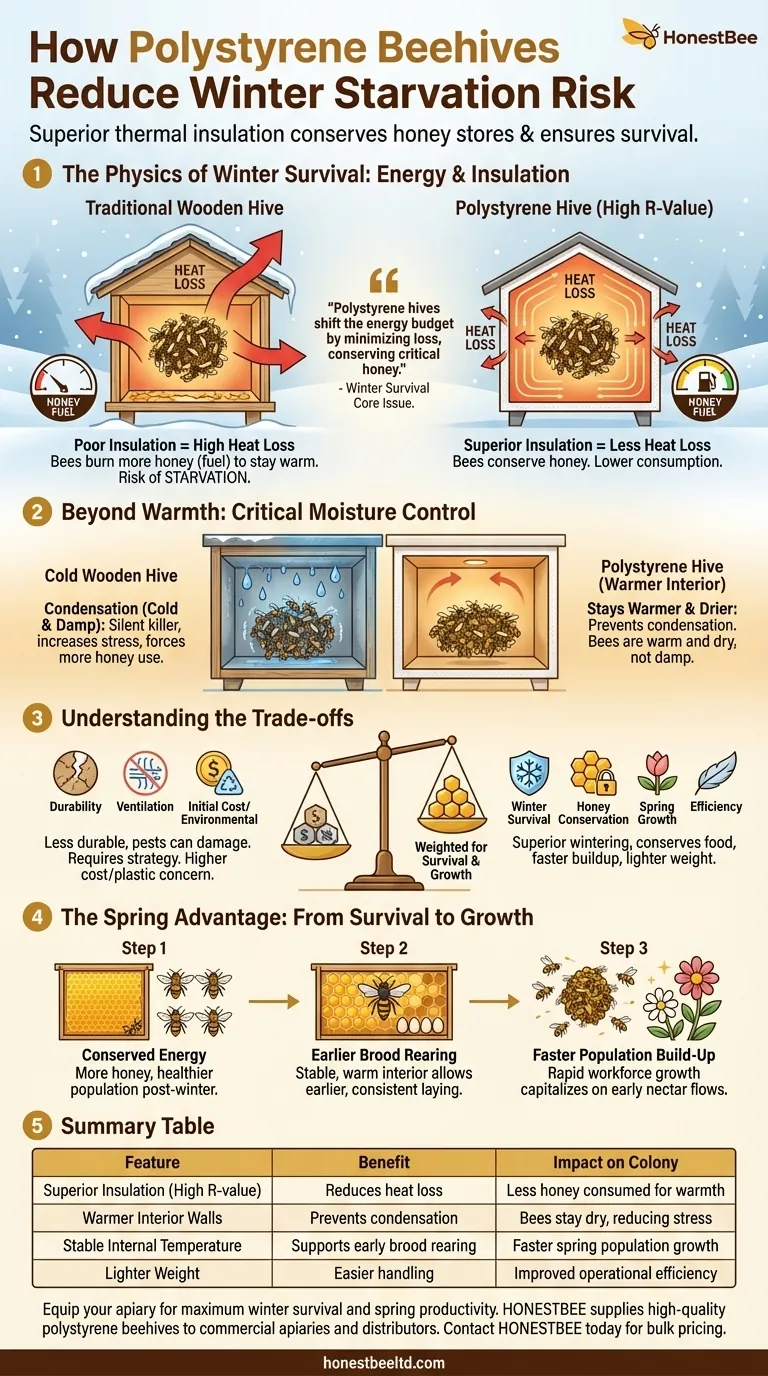
Related Products
- Inner Beehive Cover for Beekeeping Bee Hive Inner Cover
- Professional Drop-Style Hive Handles for Beekeeping
- Boardman Entrance Bee Feeder Durable Galvanized Steel and Wood Construction for Beekeeping
- Premium Comfort Grip Spring-Loaded Hive Handles
- Professional Grade Foldable Beehive Handles
People Also Ask
- What is the role of inner covers in insulated beehives? Master Moisture Control for a Healthy Colony
- What is the function of the center hole in the inner cover? Master Hive Ventilation and Feeding
- What is the purpose of the inner cover in a beehive? A Key to Hive Health & Easy Management
- Why might beekeepers use an inner cover under the telescoping outer cover? Simplify Hive Management & Protect Your Colony
- What are the advantages of using an inner cover in a beehive? Key Benefits for Hive Health & Beekeeper Efficiency











